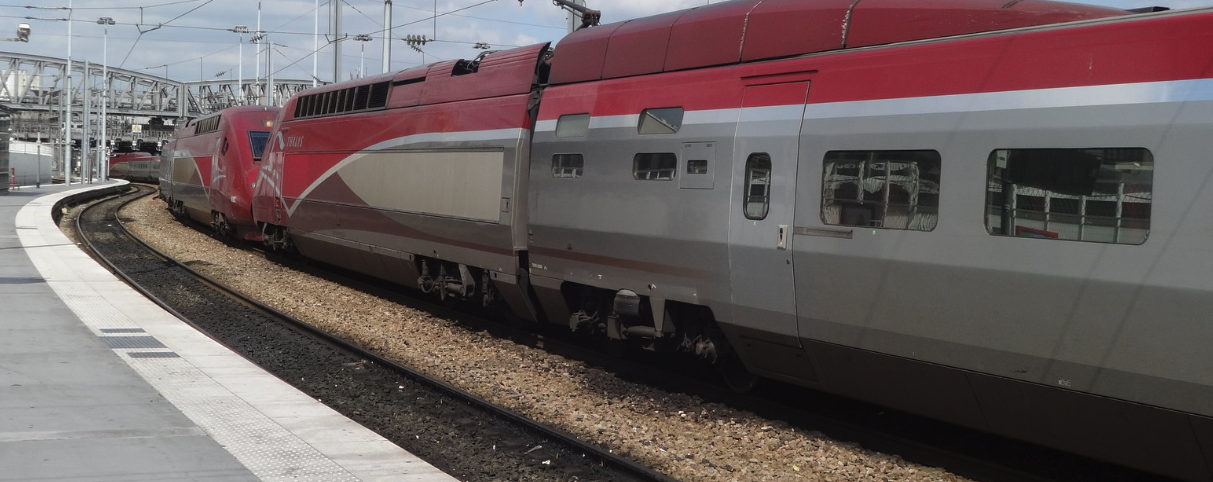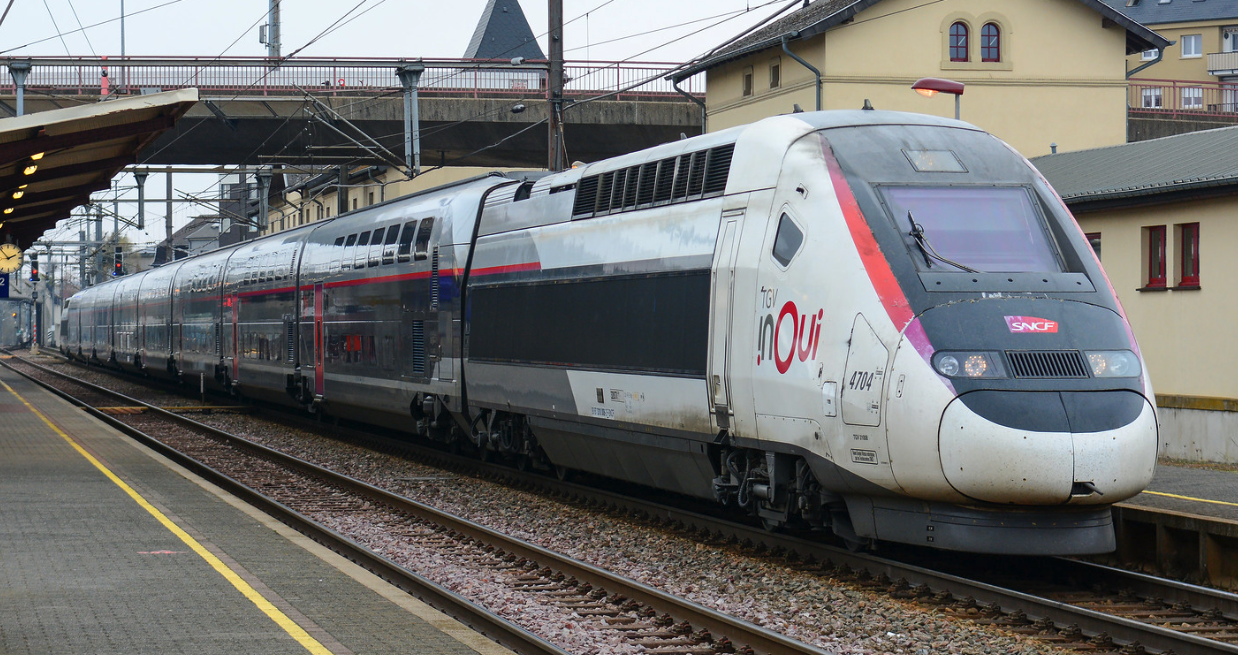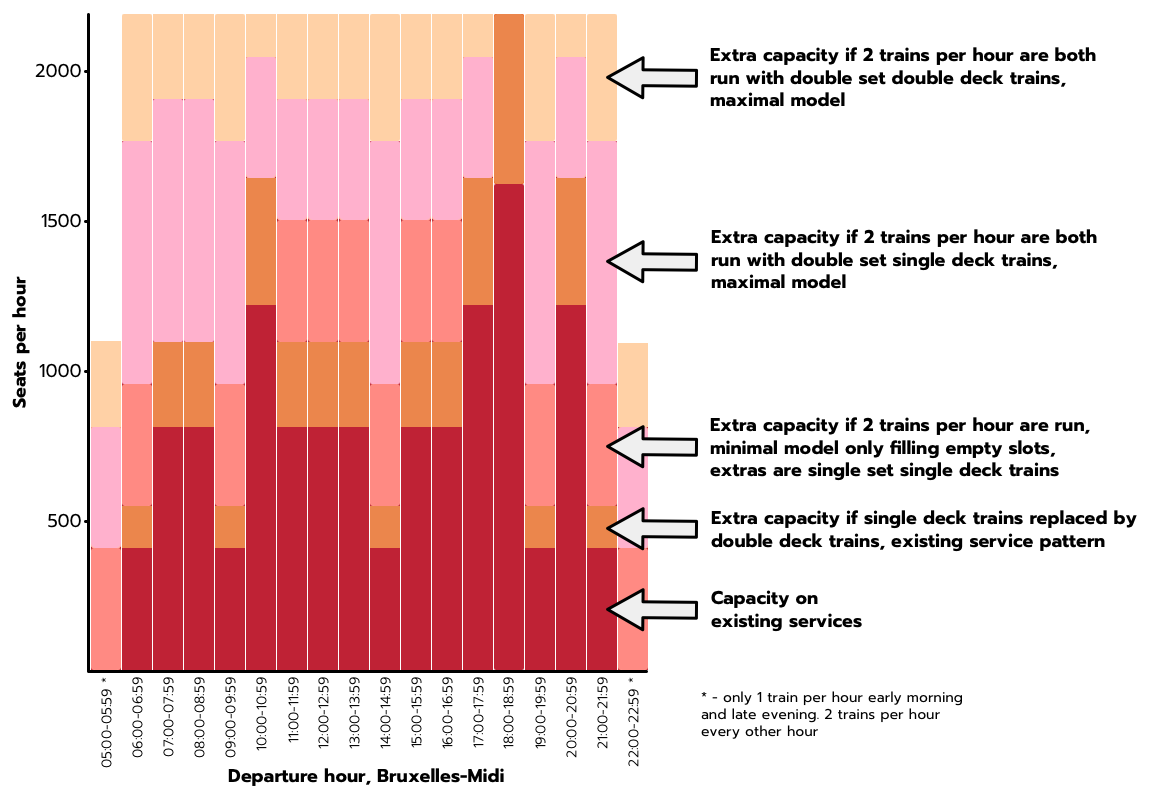It’s a common refrain: more people would take the train – especially on international routes – if only it were cheaper!
That line of argument assumes that there are actually more trains to take. In other words that there is spare capacity.
The problem is that – in many cases – that is not the case.
Take the Thalys service between Bruxelles Midi and Paris Nord as an example. It is an efficient high speed service, but it is a damned costly one. Want to travel tomorrow and half the trains are already sold out, and the price is a minimum of €109 single on the ones that still have a few seats. Book for a fortnight from now and it will still cost you a minimum of €82 single.
This approach by Thalys is economically rational, but probably not socially optimal – plenty of diesel powered buses still serve the Bruxelles-Paris route, even though it takes three times as long for the trip as by train.
The number of Thalys services offered, and how these are priced, maximises the profitability of the service – especially at peak hours.
So should we make Thalys cheaper?
I am not going to delve into how to do that here – but were the price €40, €60, €80 or €100 for a single ticket it makes little difference – the trains are going to be full anyway. Make the trains cheaper and you are not going to convey more people, you are just going to convey different people.
The only way to really solve this problem then is to increase capacity on the route.
I wondered how much this would be possible on that one rail route, and the results are astounding.
I tested three different alterations, and combinations of these.
- Replacing the current single decker Thalys trains with double decker trains
- Running 2 Thalys trains per hour throughout the day (some hours there is only 1 departure currently) and adding some extra early morning and late evening trains
- Running every Thalys train as a double set (16 carriages) rather than a single set (8 carriages)

Notably this model does not propose running any more trains than is currently the case at peak hours – currently between 18:00 and 18:59 there are two departures, each with a 16 carriage double set. I assume this could be applied across the day – more trains and drivers would be needed for this, but notably no new line infrastructure.
This graph shows what would be possible – and there is a .ods file of the workings here:
The maroon bars show existing Thalys services. I am calculating based on each 8-carriage set having 405 seats – as will be the case once the ongoing so-called Ruby renovation is completed. This gives a total of 12960 seats a day on the route currently – the stats are based on the timetable for Monday 6.3.2023.

The orange bars in the graph show the increase in capacity were the current single deck trains replaced by double deck sets. Here I have used an adapted seating plan from the most recent TGV Duplex Océane, but using the slightly higher percentage of first class seats Thalys uses – for a total of 546 seats per train. Do only this and it results in a total of 17472 seats per day, an increase of 4512 seats or a 34.8% increase.
What about instead – in a minimal way – filling in the timetable, running 2 trains per hour every hour throughout the day, and add an extra early 05:43 and an extra late 22:13 departure? These are the peach bars on the graph. These would be run with single deck 8 carriage sets. This would result in 12 more departures a day. Do only this and it results in a total of 17820 seats per day, an increase of 4860, so a 37.5% increase.
Now instead of those rather minimal changes, think in a maximal way – and combine the changes.
All those trains that are being run, double up any single set 8 carriage train to double set 16 carriage trains. That adds a further 9720 seats per day. And then replace all of those with double deck sets and that is a further 4935 seats per day.
Put all of these changes together and you get a total of 37128 seats per day on the route – an increase of 24168 seats, or a 186.5% increase. Yes, almost triple the number of seats that are available currently.
Now is there enough demand for 37128 seats per day on the route – at whatever price? I don’t know. But there is most definitely enough spare capacity on this route to massively increase rail’s market share. Yes, you would need more staff, and yes you would need more trains. But notably you would not need any new infrastructure – because this model is simply applying what happens in the busiest hour currently across the entire day.
And that will also in turn reduce the cost of tickets on off-peak services – and reducing the cost of tickets was the question this post sought to answer at the start.
Now observant readers might have noticed by now: I have not answered how to make this change happen. There would be a slew of ways – and I will develop these in subsequent posts in the future.
You could run the route like a proper public service (or with competitive tendering) with a stipulated service pattern – and introduce a legal framework to do this cross-border. You could somehow foster competition between operators on the route to drive up capacity and drive down costs (as has happened on Roma-Milano). You could lower track access charges, especially at off-peak times, to make running services then more financially attractive to operators. You could increase access to easy finance to allow operators to easily acquire more trains. Or some combination of all of those.
Images in the text:
Alstom Thalys PBKA n°4306 – Gare SNCF Paris Nord by Boris Arbogast, August 2, 2014 – Attribution-NonCommercial-NoDerivs 2.0 Generic (CC BY-NC-ND 2.0)
SNCF TGV 2N2 4704 InOui by Nelso Silva, March 20, 2022 – Attribution-ShareAlike 2.0 Generic (CC BY-SA 2.0)















Love it, keep up the great work! I’m always annoyed when checking out Thalys prices, though this gives a different angle to it.
However, when I’m flexible on where to go (e.g. for a holiday), these prices end up pushing me more towards other destinations, instead of visiting e.g. parts of France or Spain – just because the leg BXL – Paris is so expensive.
Jon, I’ve always seen that SNCF leave the double deck TGV at Lille Europe, and only run a single deck TGV onwards to Brussels Midi. Is there maybe something on that part of the route that would stop Thalys running double deck trains between Paris and Brussels?
No there’s nothing on the Belgian part of the route that would prevent double deck trains running. The reason only single deck TGVs run to Belgium is that SNCF only owns single deck ones compatible with Belgium’s 3kV dc electrification system. SNCF (or Thalys) could easily procure double deck ones compatible with 3kV dc but never has!
I might be wrong but they would just have to use different traction units at each end (an advantage of the TGV), but considering that some years ago SNCF converted Eurostars out of the blue to run under OHL 1,5kv DC (they were only compatible with OHL 3kv DC) to run the ski trains because it was cheap, the opposite will probably also be true.